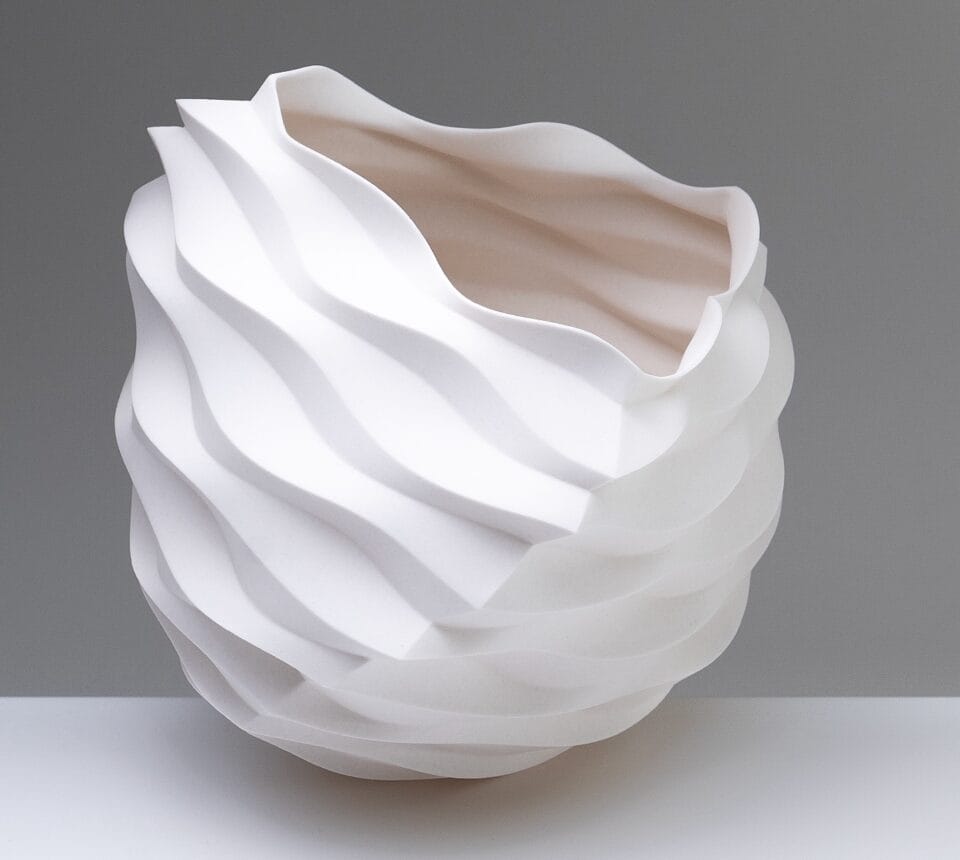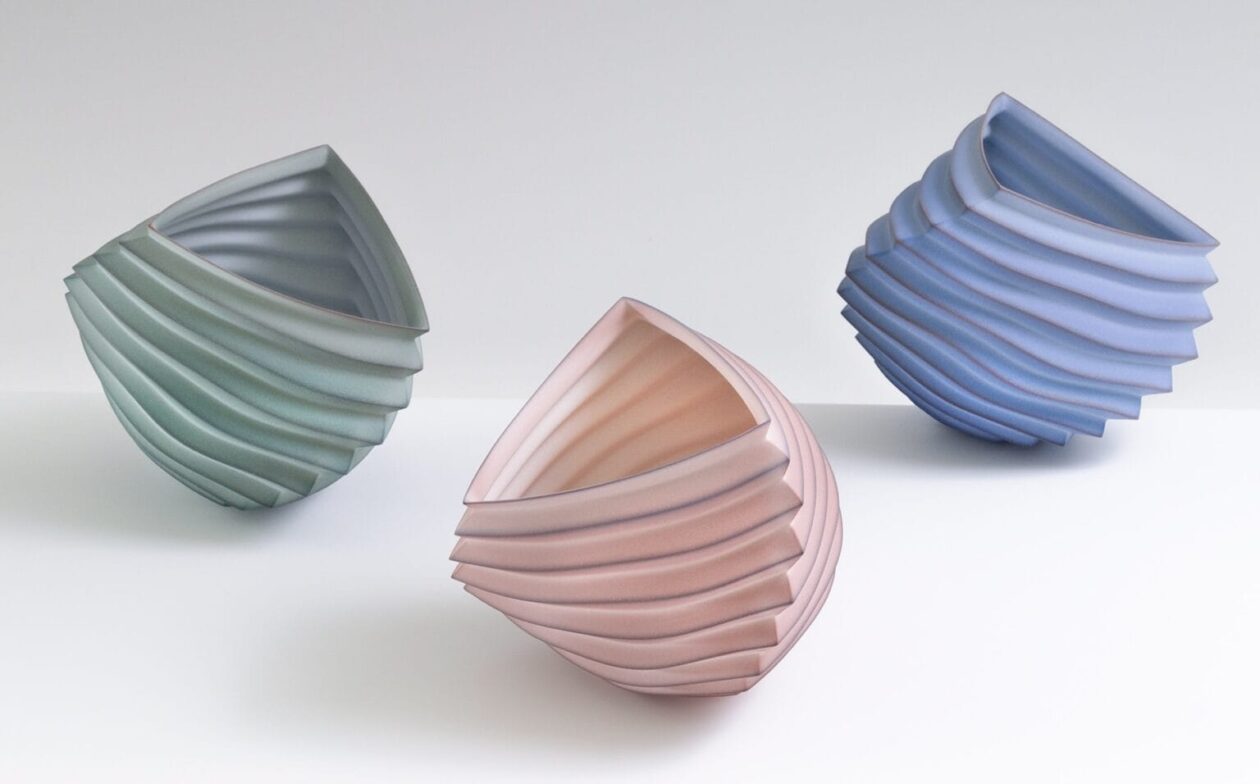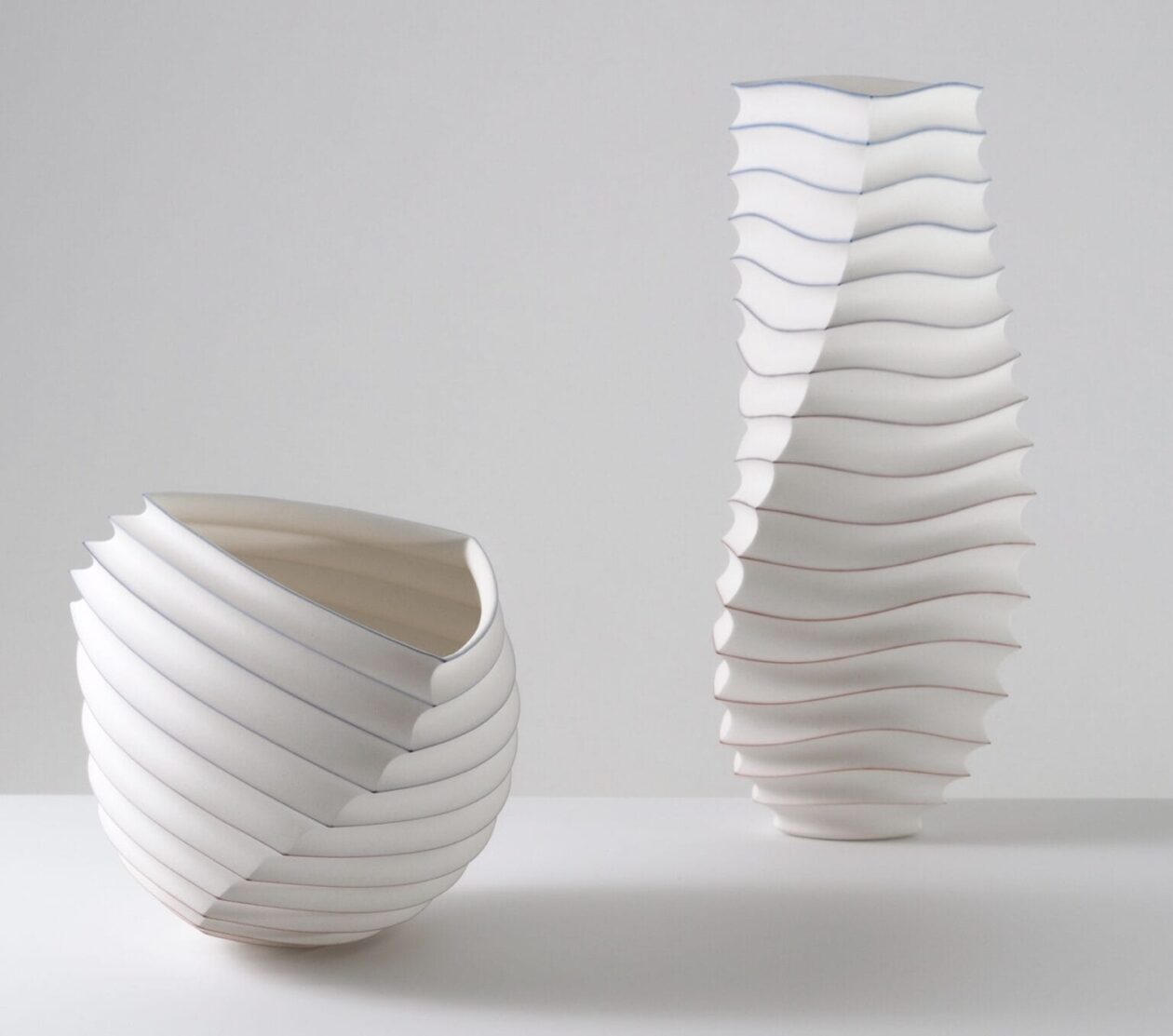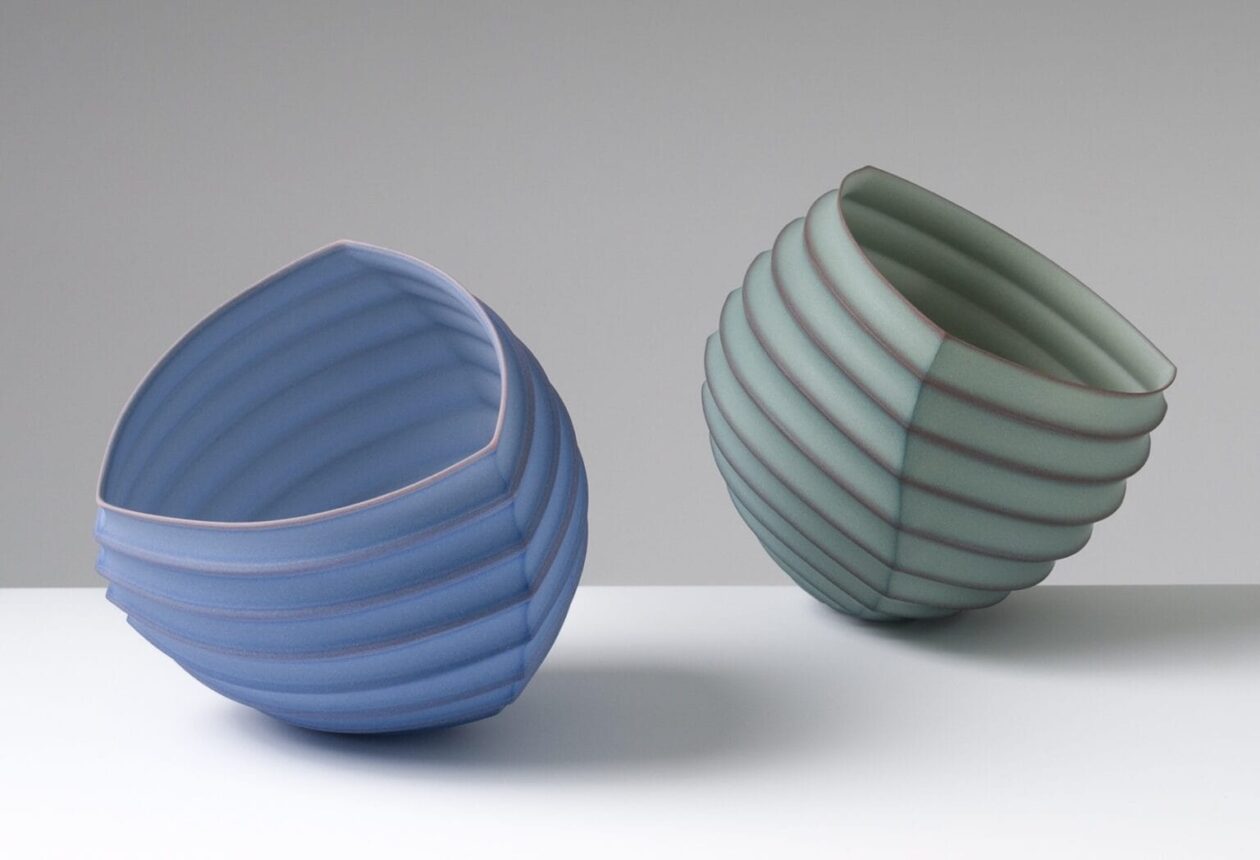Berkeley-based ceramicist Mark Goudy finds profound inspiration in the delicate folds of paper, translating this into his ongoing series, Origami. He articulates his artistic philosophy as creating “minimal forms with hidden complexity”, a pursuit rooted in his appreciation for simple yet elegant forms that echo the intrinsic geometries found throughout nature. This dedication to subtle sophistication is evident in each sculpture, where form and function seamlessly merge.
Drawing upon his extensive background as a 3D graphics hardware design engineer, Goudy employs algorithmic 3D software to conceive objects that elegantly reference the Japanese art of paper folding. A fascinating characteristic of his work is their inherent balance; many of these forms are meticulously designed to poise on their folds. When placed on a flat surface, they exhibit a gentle rocking motion, naturally settling into their unique point of equilibrium, showcasing a dynamic interaction with their environment.
Goudy’s translucent and remarkably thin pieces are crafted from slipcast black or white porcelain. He occasionally introduces color by painting metallic salt watercolors directly onto the surface after an initial bisque firing. The porous nature of the material plays a crucial role, as the salt absorbs and redistributes the pigment. This process is further influenced by the porcelain’s texture and permeability, resulting in nuanced color variations. As the metal salts permeate the clay body, they move and interact, and during drying, they naturally gradate and concentrate on the edges, effectively highlighting the intricate folds and ridges of his forms.
With a restrained palette of only three metal salt pigments — gold, cobalt, and chromium — Goudy achieves a surprisingly diverse range of red, blue, and green shades. He expresses a particular affinity for cobalt blue, which he describes as a reference to the ineffable blue of water and distance. Goudy conceptualizes these objects not merely as sculptures, but as vessels that contain light and atmosphere, imbuing them with an ethereal quality. Those interested in experiencing his work firsthand will have the opportunity at the 63rd Faenza Prize for the International Biennial of Contemporary Ceramic Art in Faenza, Italy, running from June 28 to November 30.
More info: Website, Instagram.










